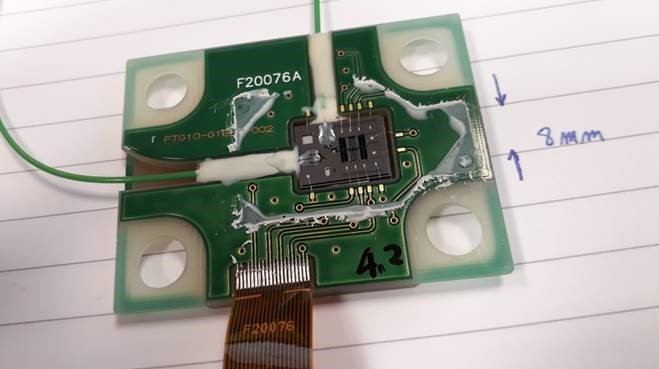Lead Organisation: STFC RAL Space
Project Lead: Damien Weidmann
Lightweight, power-efficient, low-cost and efficient sensors are highly sought after for space applications. Hyperspectral remote sensors are of particular interest since they are the prime tool to carry out global observation of planet’s atmospheres, including the Earth. The requirements on remote sensors are becoming even more stringent and novel disruptive technologies are therefore needed. Over recent years, the concept of highly miniaturized micro-electro-mechanical systems (MEMS) monolithically embedded into silicon wafers has been developed to a stage at which “chip” based spectrometers have been demonstrated and become available.
This project focuses on assessing near infrared (NIR) photonics technologies associated with micro-electro-mechanicals systems (MEMS), produced through silicon lithography and photonics technologies. More specifically, the feasibility of MEMS-based Fourier Transform Spectrometers (FTS) for greenhouse gas sounding is investigated through preliminary modelling and technology assessment in the laboratory.
In many respects the size/performance of the MEMS FTS is truly impressive. A 1 cm2 chip provides a decent spectrometer with ~8 nm resolution in the NIR transparency window. In addition, the scalability and cost effectiveness of silicon photolithography as the spectrometer manufacturing technique ensures that multi-channel systems can be developed. For example, a stack of 10 spectrometers occupying a 1 cm3 volume could be produced, enabling efficient spatial multiplexing for multi-pixel spectral analysis.
The MEMS FTS was found to operate within expectations and gas spectroscopy was demonstrated with the device. The stability of the system was very good. Only the SNR obtained was low by several order of magnitude compared to expectation, and the system has not been optimized for operation with limited input optical power. A detailed analysis of the system shortcoming was not possible with a “boxed” spectrometer. In a sense, whilst cost effective, the project also showed the limitation of using a commercial off the shelf MEMS FTS, as system and component level understanding and characterization is not possible, and packaging and software impose severe restriction on the data and methods available.
The limited environmental testing that could be carried out on the device was encouraging. Whilst the device failed during vibrational testing, the source of the failure was, to the best knowledge, not due to the MEMS structure alteration, indicating that silicon MEMS are suitable for small satellite space missions.
With this caveat, it is believed that the MEMS FTS technology is highly relevant to microsat space missions. The size/performance ratio is extremely favourable, and applications could also expand beyond atmospheric sounding and include diagnostics and calibration. However, for this to move forward we would recommend to study and design space application specific systems truly optimized for space-borne spectral measurements.

This project has evaluated the relevance of such a novel device for low-cost nanosatellite based Earth observation, and more particularly the remote sounding of greenhouse gases using solar scattered radiation in the short wave infrared. A MEMS-based Fourier transform spectrometer was evaluated for this application in the laboratory using gas cell analogues and undergo space environment testing to study the impact of space qualification on the MEMS spectrometer. At the same time, the laboratory test data on the MEMS sensor has informed a modelling activity which has provided a first evaluation of the prospect of this ultra-miniaturized technology for greenhouse gas observation from nanosatellite platforms.
